It might not be Guadeloupe’s capital (that distinction goes to Basse-Terre) but Pointe-à-Pitre is the island’s biggest city and arguably its cultural centre with the highest concentration of museums, restaurants and bars. Due to the vicinity of the airport and ferry terminal it’s also likely the city you’ll arrive in, when first coming to Guadeloupe.
It is located right in the middle between the lusher and more rugged western and the more developed eastern half of the island. Even if you might be itching to continue on to the beaches and natural sights that the island’s most famous for, there are enough sights in Pointe-à-Pitre to warrant at least a couple of hours of your time. Here’s everything you need to know about visiting Guadeloupe’s biggest city.
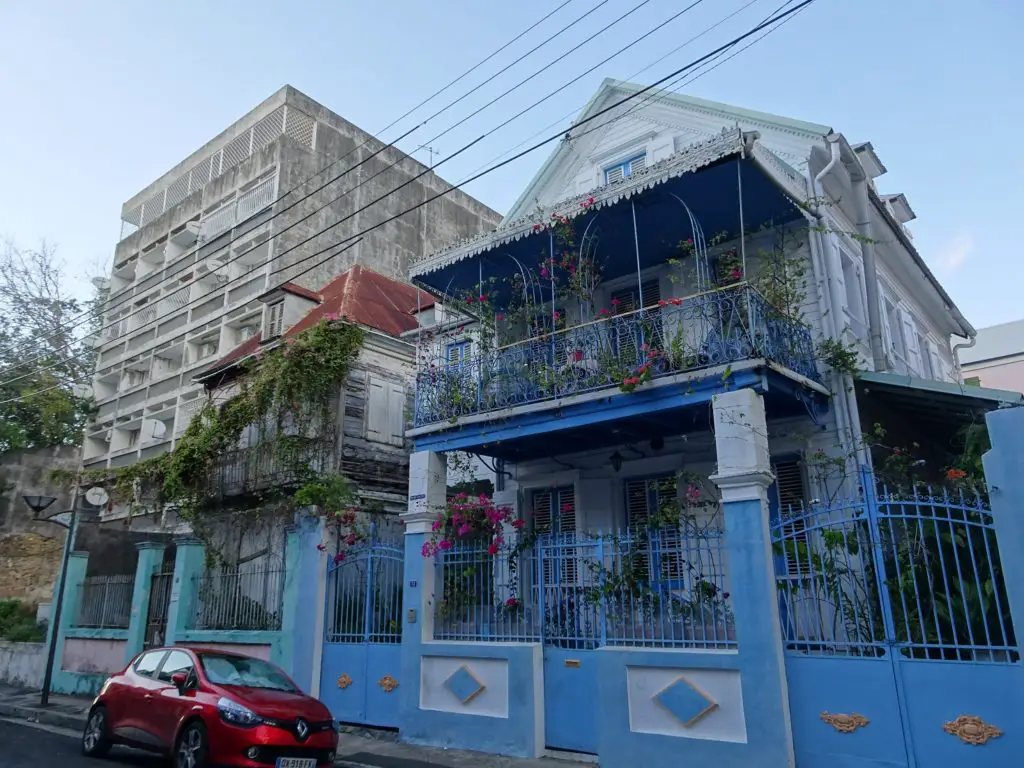
This post may contain affiliate links and I might earn a small commission at no additional cost to you. For more info click here.
The Best Things to See and Do in Pointe-à-Pitre, Guadeloupe
Place de la Victoire and Fish Market
The city’s central square is pleasantly shaded by trees and dotted by several fountains, small monuments and sculptures of local military dignitaries, as well as a colourful gazebo at its northern end.

Top 3 Hotels in Pointe-à-Pitre
Budget: The Green Hostel (pictured)
Midrange: Place de la Cathedrale Guesthouse
Luxury: Appartments de lux vue mer
.
It’s a nice place to relax for a bit, read a book or just watch the world go by. It also pays to take a walk along the roads bordering the square, as many walls feature pretty cool murals.
Apart from that, the central square a good spot of orientation, so I’ll use it to explain the directions to the other sights. The southern end of Place de la Victoire, is located close to the harbour La Darse and dominated by a bustling Fish and Produce Market. The latter takes place daily from Monday to Saturday and is a good place to watch the locals go about their daily business.
Cathedrale de Saint Pierre et Saint Paul
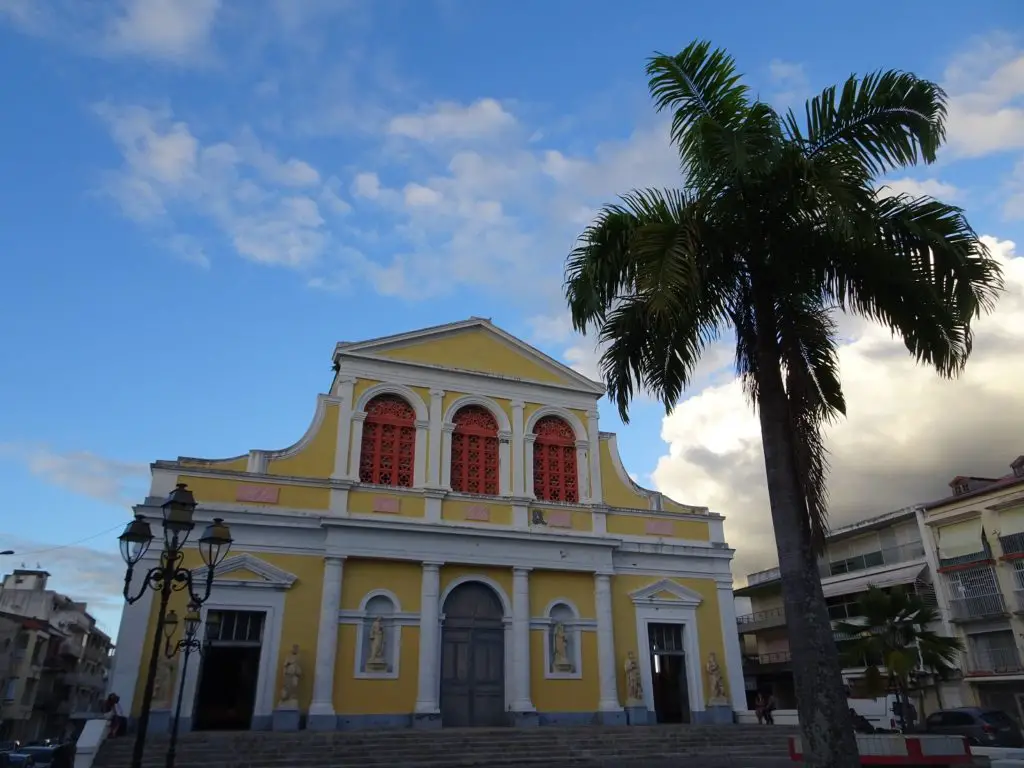
Pointe-à-Pitre’s mustard-yellow Cathedral dominates the Place de L’Eglise, which holds a flower market most mornings. While I’m sure you’re not planning on lugging around a bunch of geraniums in your backpack, the flower-decked square with the cathedral in the background makes for a great photo opportunity.
The current building mostly dates to the mid-19th century and after the cathedral was repeatedly damaged in various earthquakes, the interior now features functional, but distinctly unattractive steel reinforcements. The ostentatious building facing the cathedral is the Palais de Justice (Central Courthouse). The cathedral is two blocks west from the northern end of the Place de la Victoire.
Central Market (Marché Saint-Antoine)
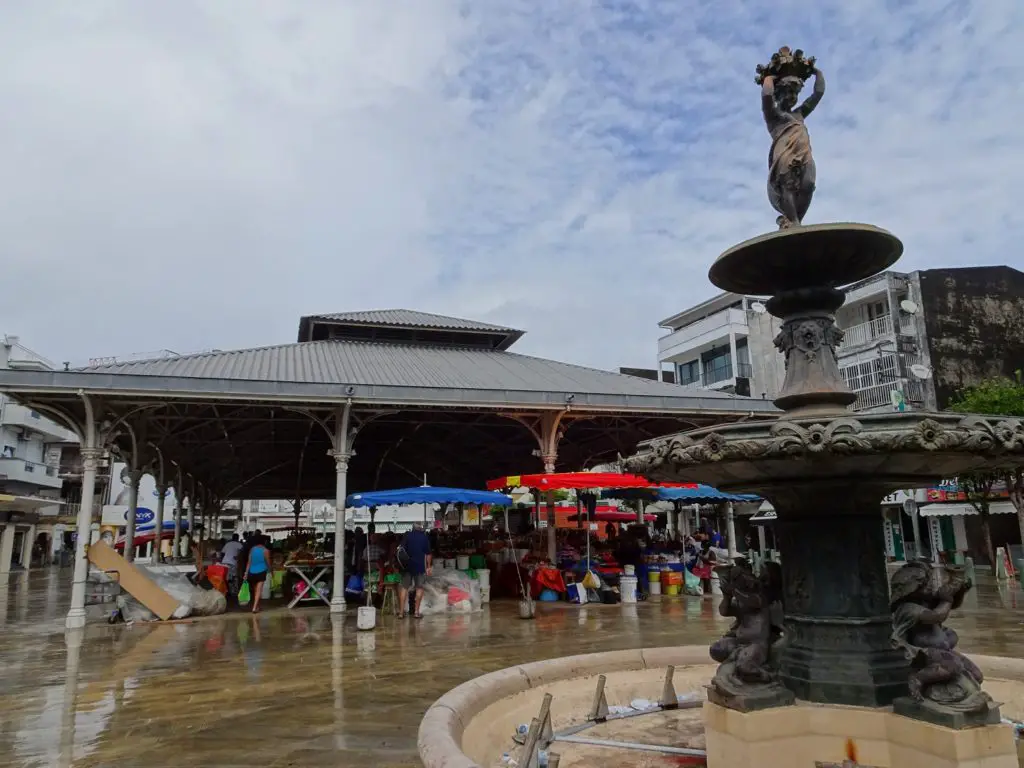
The city’s central market features plenty of stalls selling fruit and vegetables and is a good spot to have a chat with some locals. It’s busiest in the mornings, when the fresh produce comes in. The pretty market hall dates to the 1870s and the little square in front sports an intricate fountain topped by a sculpture of a woman carrying her wares on her head in the traditional fashion.
Saint-John Perse Museum
This small museum details the life and work of the Lesser Antilles’ first Nobel Laureate, the poet Alexis Léger better known as Saint-John Perse. English signage is scarce and the way it’s presented is a bit dry, so I wouldn’t go out of my way to visit it but it’s worth checking out if you have half an hour to kill.
The best part for me was the chance to peak into the beautifully restored late 19th-century creole mansion that it’s housed in. The Villa Souques-Pagès formerly belonged to a wealthy local sugar merchant and is one of the more attractive buildings in central Pointe-à-Pitre. The museum is one block south and one block west of the south-western corner of the Place de la Victoire. The entrance fee is 2,50€
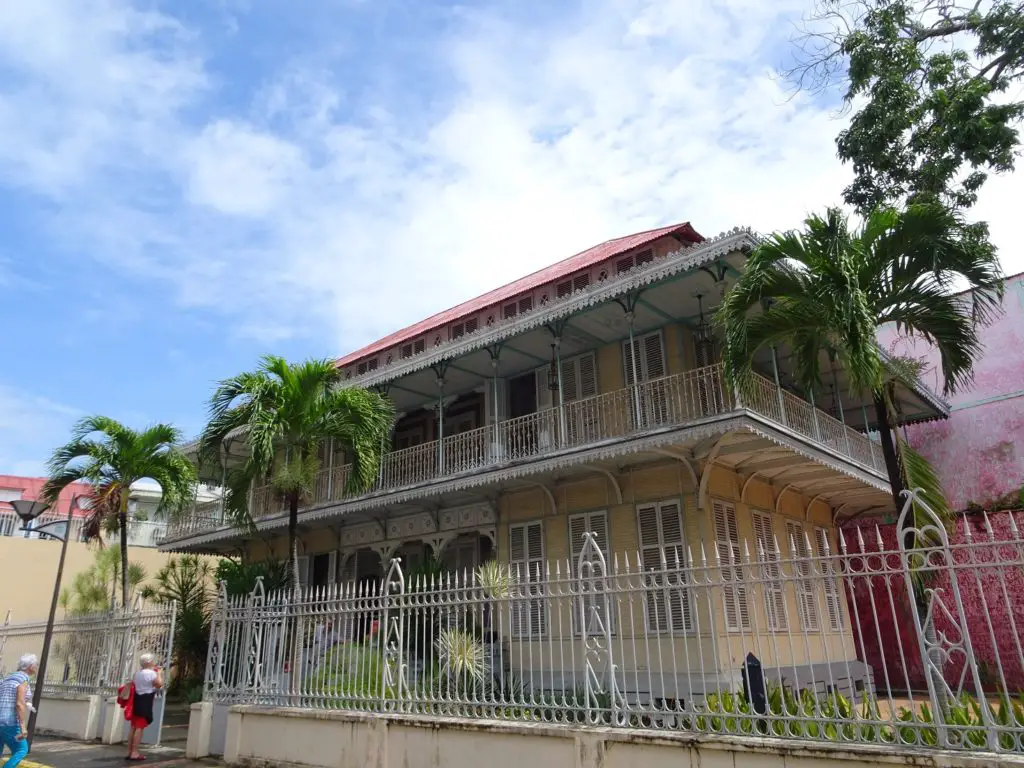
Mémorial ACTe Slavery Museum and other sights
Pointe-à-Pitre’s famous slavery monument and museum was unfortunately closed when we were in town. It’s housed in a modern glass-and-steel building some 10 minutes by foot south of Place de la Victoire on the eastern side of the harbour. Its location on the grounds of a former sugar factory, where countless locals where exploited by slave labour, decidedly enhances the gravity of the place.
The entrance fee seems quite steep with 15€ but the building is huge and people tell me that it’s well worth visiting. On the way there, close to the Gare Routière de Darboussier, look out for the haunting mural depicting a massacre perpetrated on striking local workers by the police on May 26th 1967.
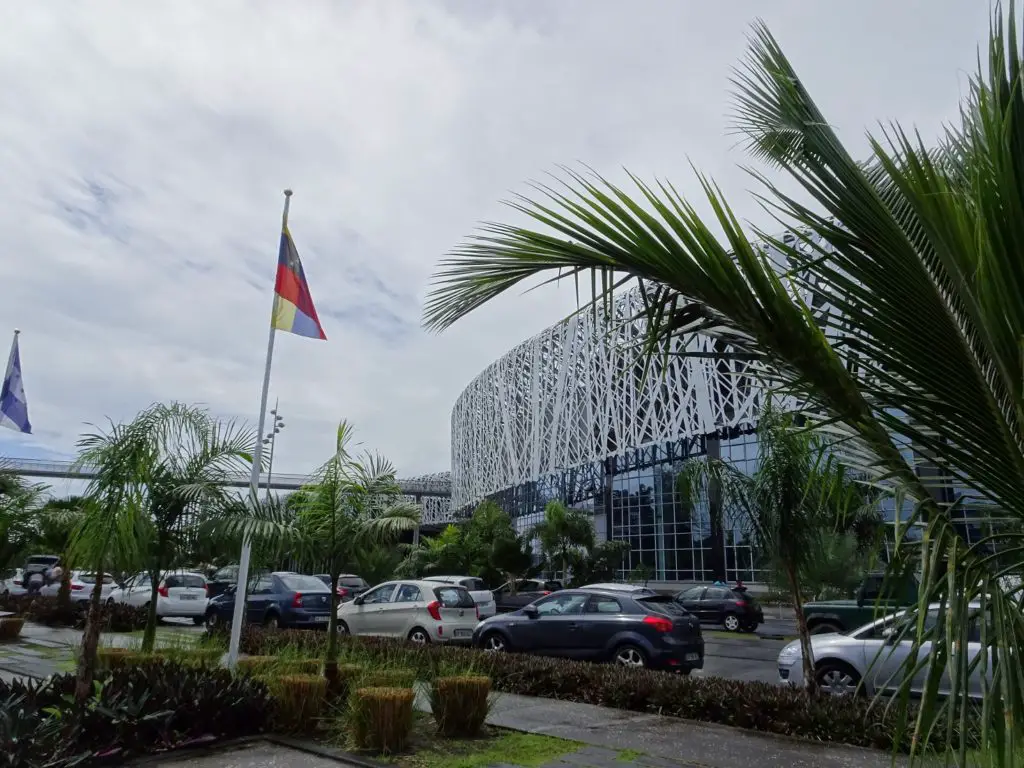
Museum Schœlcher, the former domicile of a local senator and abolitionist was another museum, which was unfortunately closed when we were in town. It’s four blocks west of the southwestern edge of Place de la Victoire along Rue Peynier. The entrance fee is 4€.
Map of Pointe-à-Pitre
This map shows the main sights mentioned above as well as some accommodation options, most of them private apartments available for rent.
Practicalities
How to get to Pointe-à-Pitre
Guadeloupe’s international airport is located about 5km north of the city centre and can be reached by using the local city bus lines AE1 and AE3. If you arrive or depart late at night you can either use one of the ubiquitous taxis or, if you’re a little crazy (like we are) and your bags aren’t too heavy, you can actually walk there, which takes about an hour from the centre of town.
When you plan on traversing the island by bus, note that there are two separate overland bus stations in the city. Gare Routière de Darboussier is located about 5 minutes south of the southeastern edge of the Place de la Victoire and has bus connections to places on Grande-Terre, the eastern half of the island.
Gare Routière de Bergevin is located directly to the north of the ferry terminal and the buses starting there go to destinations on Basse-Terre, the western half of Guadeloupe.

You can also travel to Guadeloupe by ferry from the nearby island of Dominica, which is a cheaper and more atmospheric way than flying. You can read everything you need to know about that in my guide here.
How to get around in Pointe-à-Pitre
A local bus network runs all over the city and up to the airport. It stops at most points of touristic interest, including Place de la Victoire, the Mémorial ACTe Museum and the two overland bus stations Gare Routière de Darboussier south of the centre and Gare Routière de Bergevin north-west of the centre.
The latter is also located close to the ferry terminal for Dominica and Martinique as well as Marie Galante and the Îles des Saintes.
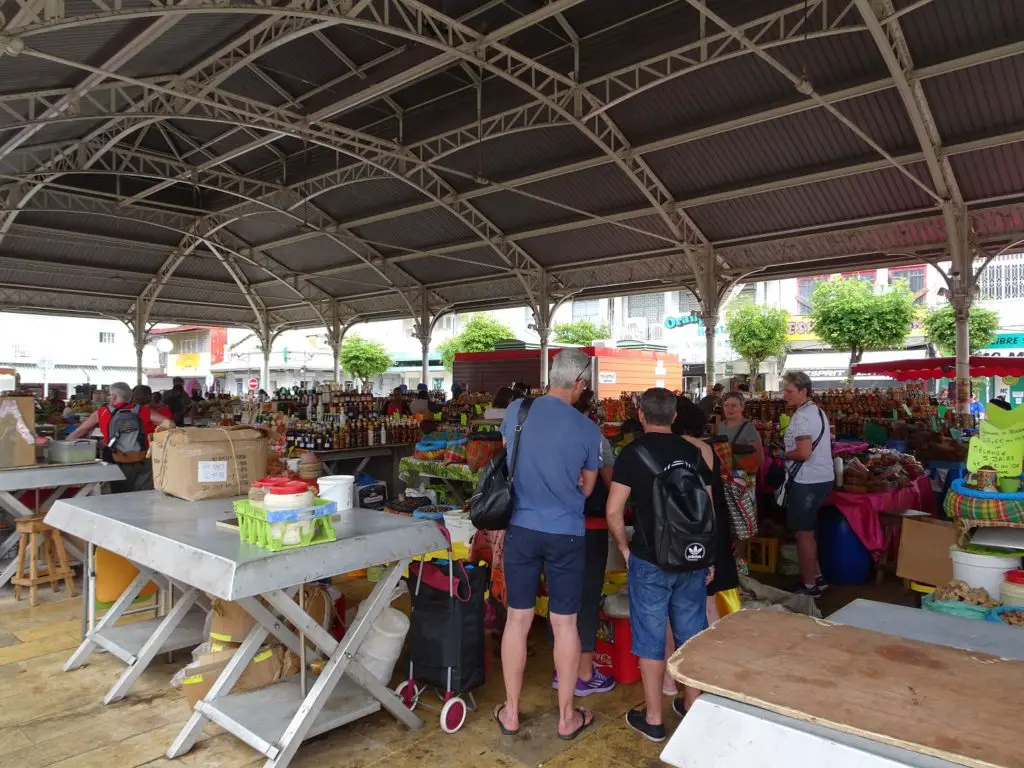
Where to stay in Pointe-à-Pitre
At the time of writing, there are only a handful of budget choices in the city, one of them being the centrally located and cozy Green Hostel. Another affordable option would be, Au delà de la Porte du Bonheur.
Mid-range options are a bit more common and include Place de la Cathedrale Guesthouse, near the (…surprise;-) Cathedral. Appartements de luxe vue mer is one of the few top-end options in town, renting out spacious apartments right next to Place de la Victoire. Check out the map above for more options.
Where to eat in Pointe-à-Pitre
There’s no shortage of restaurants and cafés in the city, especially in the area around Place de la Victoire and the Cathedral. If you’re on a tight budget, tasty sandwiches can be bought in the market area and out of small stalls that set up along the edges of the Place de la Victoire.
Where to go next
La Désirade Island, the perfect place to get away from it all
La Soufrière Volcano, climb Guadeloupe’s spectacular active Volcano.
The Îles des Saintes, Guadeloupe’s own little slice of paradise.
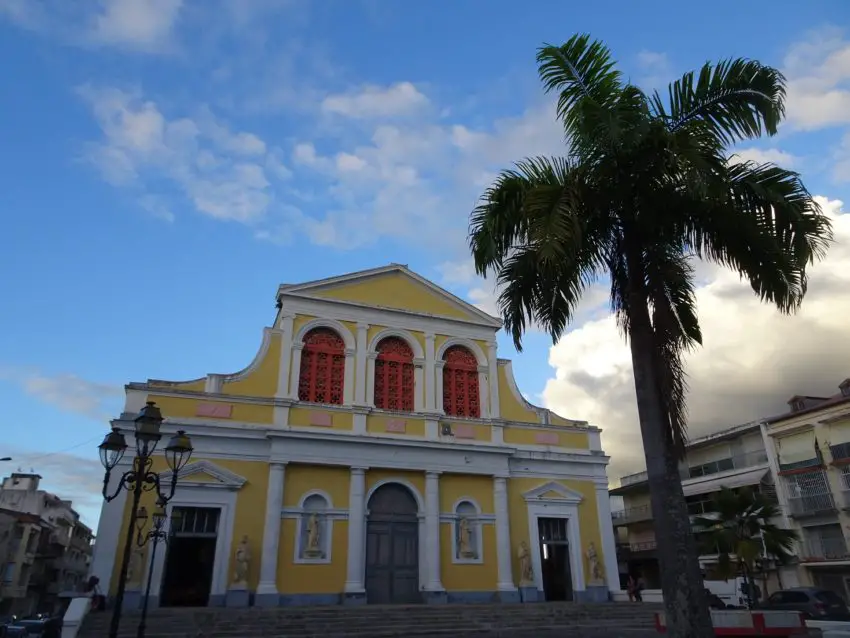
1 thought on “The 5 Best Things to do in Pointe-à-Pitre, the Cultural Capital of Guadeloupe”